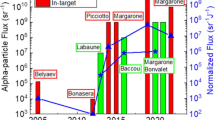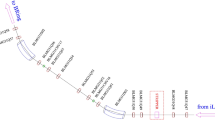We consider the project of a sub-gigawatt free-electron laser (FEL) in the THz range based on a high-current electron beam proposed in 2020 by a scientific collaboration team from G. I.Budker Institute of Nuclear Physics of the Siberian Branch of the Russian Academy of Sciences (BINP SB RAS, Novosibirsk) and the Institute of Applied Physics of the Russian Academy of Sciences (Nizhny Novgorod). A new generation of linear induction accelerators (LIA) with a kiloampere current level and an energy of up to 10 MeV, which are capable of forming beams with a high current density and low normalized emittance, is developed at the BINP SB RAS and can be used as a source of an electron beam for such a FEL generator. The objective of our research is to develop and create a FEL generator producing pulses of coherent radiation in the THz range with a sub-GW power level and a record-breaking energy content in a pulse of about 10–100 J. Combination of a high current density of the beam and its long pulse duration (about 100 ns) together with a small spread in the longitudinal electron velocities of the beam opens up the possibility of implementing the FEL scheme in two different types of oversized electrodynamic systems. The first is based on a two-mirror Bragg resonator, in which waves are reflected due to the coupling of the traveling and quasi-critical waves on a corrugated surface. In the second type of the electrodynamic system, a quasi-optical resonator based on the Talbot effect is used. According to the theory, the simulation results, and the data of the cold experiments, both schemes make it possible to ensure a stable regime of narrow-band generation of THz radiation under the conditions of significant cavity oversize, i.e., the ratio of the cavity diameter and the radiation wavelength (ϕ/⋋ > 30–40). The main structural elements of the developed section of the FEL generator and their design parameters are discussed within the framework of this article. When developing the magnetic system of this section, we calculated the time dependence of the spatial configurations of pulsed magnetic field in a helix undulator with a period of d = 10 cm and a length of 2 m, as well as in the solenoid of a quasi-homogeneous magnetic field of the same length intended for compression of the beam cross section before its input in the vacuum channel of the FEL section and for consequent transport of the beam inside it. The presented results of modeling and testing of the manufactured elements for the FEL section will become the basis for the design of a high power FEL generator operated in the frequency range from 0.3 to 1.2 THz.
Similar content being viewed by others
References
A.V.Arzhannikov, N. S. Ginzburg, A. M. Malkin, et al., Proc. 44th Int. Conf. Infrared, Millimeter, and Terahertz Waves (IRMMW-THz 2019). 1–6 September 2019, Paris, France, Art. no. 5864231. https://doi.org/10.1109/IRMMW-THz.2019.8874573
N.Yu.Peskov, A. V. Arzhannikov, N. S. Ginzburg, et al., Proc. SPIE. V. 11582. 4th Int. Conf. Terahertz and Microwave Radiation: Generation, Detection, and Applications. 24–26 August 2020, Tomsk, Russia, 1158207. https://doi.org/10.1117/12.2579554
P. V. Logachev, G. I. Kuznetsov, A. A.Korepanov, et al., Instrum. Exp. Tech., No. 6, 42–49 (2013). https://doi.org/10.7868/S0032816213060220
D. A. Nikiforov, M. F. Blinov, V.V. Fedorov, et al., Phys. Part. Nuclei Lett., 17, 197–203 (2020). https://doi.org/https://doi.org/10.1134/S1547477120020156
E. S. Sandalov, S. L. Sinitsky, D. I. Skovorodin, et al., in: 2021 IEEE Int. Conf. Plasma Science, September 12–16, 2021, Lake Tahoe, USA, 9588436. https://doi.org/10.1109/ICOPS36761.2021.9588436
W.Faries, K.A.Gehring, P. L.Richards, and Y.R. Shen, Phys. Rev., 180, No. 2, 363–365 (1969). https://doi.org/https://doi.org/10.1103/PhysRev.180.363
J.R. Morris and Y.R. Shen, Opt. Commun., 3, No. 2, 81–84 (1971). https://doi.org/https://doi.org/10.1016/0030-4018(71)90182-9
C. Fattinger and D.Grischkowsky, Appl. Phys. Lett., 53, 1480–1482 (1988). https://doi.org/https://doi.org/10.1063/1.99971
D. Grischkowsky, S.Keiding, M.Exter, and Ch. Fattinger, J. Opt. Soc. Am. B, 7, 2006–2015 (1990).
P. Shumyatsky and R.R.Alfano, J. Biomed. Opt., 16, No. 3, 033001 (2011). https://doi.org/https://doi.org/10.1117/1.3554742
Y. Lee, Principles of Terahertz Science and Technology (Lecture Notes in Physics), Springer, New York (2009).
P.Tan, J. Huang, K. Liu, et al., Sci. China Inf. Sci., 55, 1–15 (2012). https://doi.org/https://doi.org/10.1007/s11432-011-4515-1
P.U.Jepsen, D.G.Cooke, and M.Koch, Laser Photonics Rev., 5, 124–66 (2011). https://doi.org/https://doi.org/10.1002/lpor.201000011
P. C. M. Planken, C. E.Rijmenam, and R.N. Schouten, Semicond. Sci. Technol., 20, No. 7, S121–S127 (2005). https://doi.org/https://doi.org/10.1088/0268-1242/20/7/001
K. B. Cooper, R. J.Dengler, N. Llombart, et al., IEEE Trans. Terahertz Sci. Technol., 1, No. 1, 169–182 (2011). https://doi.org/https://doi.org/10.1109/TTHZ.2011.2159556
T. Kampfrath, K.Tanaka, and K. A. Nelson, Nat. Photonics, 7, 680–690 (2013). https://doi.org/https://doi.org/10.1038/nphoton.2013.184
B. L.Yu, Yang Y., Zeng F., et al., Appl. Phys. Lett., 86, No. 10, 101108 (2005). https://doi.org/10.1063/1.1882759
M. Thumm, J. Infrared Millim. Terahertz Waves, 41, 1–140 (2020). https://doi.org/https://doi.org/10.1007/s10762-019-00631-y
R. A. Lewis, J. Phys. D, Appl. Phys., 47, 374001 (2014). https://doi.org/https://doi.org/10.1088/0022-3727/47/37/374001
G.P. Gallerano and S.Biedron, 26th Int. Free Electron Laser Conf. August, 29—September, 3 2004, Trieste, Italy, p. 216–221.
M.Yu.Glyavin, A.G. Luchinin, A.A. Bogdashov, et al. Radiophys. Quantum Electron., 56, Nos. 8–9, 497–507 (2014). https://doi.org/https://doi.org/10.1007/s11141-014-9454-4
A. V. Arzhannikov and I. V.Timofeev, Plasma Phys. Control. Fusion 54, 105004 (2012). https://doi.org/https://doi.org/10.1088/0741- 3335/54/10/105004
A. V. Arzhannikov, I. A. Ivanov, A.A.Kasatov, et al., Plasma Phys. Control. Fusion, 62, No. 4, 045002 (2020). https://doi.org/10.1088/1361-6587/ab72e3
I.V. Timofeev, V.V.Annenkov, and A.V.Arzhannikov, Phys. Plasmas, 22, 113109 (2015). https://doi.org/https://doi.org/10.1063/1.4935890
D.A. Samtsov, A.V.Arzhannikov, S. L. Sinitsky, et al., IEEE Trans. Plasma Sci., 49, No. 11, 3371–3376 (2021). https://doi.org/https://doi.org/10.1109/TPS.2021.3108880
A.V.Arzhannikov, S. L. Sinitsky, S. S.Popov, et al., IEEE Trans. Plasma Sci., 50, No. 8, 2348–2363 (2022). https://doi.org/10.1109/TPS.2022.3183629
A.Arzhannikov, V.Annenkov, I. Ivanov, et al., J. Phys. Conf. Series, 1647, No. 1, 012010 (2020). https://doi.org/https://doi.org/10.1088/1742-6596/1647/1/012010
G.P. Gallerano, A.Doria, E.Giovenale, et al., Terahertz Sci. Technol., 7, No. 4, 160–171 (2014). https://doi.org/10.11906/TST.160-171.2014.12.15
Y. U. Jeong, B. C. Lee, S. K. Kim, et al., Nucl. Instrum. Methods Phys. Res. A, 475, Nos. 1–3, 47–50 (2001). https://doi.org/https://doi.org/10.1016/S0168-9002(01)01533-9
J. Byrd, M.W.P. Leemans, A. Loftsdottir, et al., Phys. Rev. Lett., 89, 224801 (2002). https://doi.org/https://doi.org/10.1103/PhysRevLett.89.224801
G. L. Carr, M. C. Martin, W.R. McKinney, et al., Nature, 420, 153–156 (2002). https://doi.org/https://doi.org/10.1038/nature01175
A. Gover, A. Faingersh, A. Eliran, et al., Nucl. Instrum. Methods Phys. Res. A, 528, 23–27 (2004). https://doi.org/https://doi.org/10.1016/j.nima.2004.04.011
A. F. G.Van der Meer, Nucl. Instrum. Methods Phys. Res. A, 528, 8–14 (2004). https://doi.org/https://doi.org/10.1016/j.nima.2004.04.008
O.A. Shevchenko, V. S.Arbuzov, N.A.Vinokurov, et al., Phys. Procedia, 84, 13–18 (2016). https://doi.org/10.1016/j.phpro.2016.11.004
G. N. Kulipanov, E.G.Bagryanskaya, E.N.Chesnokov, et al., IEEE Trans. Terahertz Sci. Technol., 5, No. 5, 798–809 (2015). https://doi.org/10.1109/TTHZ.2015.2453121
D. A. Nikiforov, A. V.Petrenko, S. L. Sinitsky, et al., J. Instrum., 16, P11024 (2021). https://doi.org/https://doi.org/10.1088/1748-0221/16/11/P11024
D. A. Nikiforov, A. V. Ivanov, S. L. Sinitsky, et al., Siberian J. Phys., 17, No. 4, 31–44 (2022). https://doi.org/10.25205/2541-9447-2022-17-4-31-44
E. S. Sandalov, S. L. Sinitsky, D.A.Nikiforov, et al., Proc. 46th Int. Conf. Infrared, Millimeter and Terahertz Waves. August 29—September 3, 2021, Chengdu, China, 9567073. https://doi.org/10.1109/IRMMW-THz50926.2021.9567073
E. S. Sandalov, S. L. Sinitsky, D. I. Skovorodin, et al., Siberian J. Phys., 17, No. 2, 16–29 (2022). https://doi.org/10.25205/2541-9447-2022-17-2-16-29
E. S. Sandalov, S. L. Sinitsky, A.V.Arzhannikov, et al., Bull. Rus. Acad. Sci. Phys., 87, No. 5, 573–579 (2023). https://doi.org/10.3103/S1062873822701763
A. V. Arzhannikov, P. A. Bak, V. I. Belousov, et al., Radiophys. Quantum Electron., 64, No. 11, 814–824 (2022). https://doi.org/https://doi.org/10.1007/s11141-022-10180-5
N.Yu.Peskov, A. V. Arzhannikov, V. I. Belousov, et al, Proc. XI All-Russia Scientific-Technical Conf. “Microwave Electronics and Microelectronics,” May 30—June 2, 2022, St. Petersburg, Russia, pp. 207–211.
A.K.Kaminsky, É.A. Perel’stein, S.N. Sedykh, et al., Tech. Phys. Lett., 36, No. 3, 211–215 (2010). https://doi.org/10.1134/S1063785010030053
N.Yu.Peskov, N. S. Ginzburg, A. K. Kaminsky, et al., Proc. 41th Int. Conf. Infrared, Millimeter and Terahertz Waves. September 25–30, 2016, Copenhagen, Denmark, 7758360. https://doi.org/10.1109/IRMMW-THz.2016.7758360
N.Yu.Peskov, N. S. Ginzburg, A. K. Kaminsky, et al., Radiophys. Quantum Electron., 63, No. 12, 931–975 (2021). https://doi.org/https://doi.org/10.1007/s11141-021-10105-8
N. S. Ginzburg and N.Yu.Peskov, Zh. Tekh. Fiz, 58, No. 5, 859–869 (1988).
N.Yu.Peskov, High-Power Free-Electron Masers with One- and Two-Dimensional Distributed Feedback, Doct. Sci. Theses, Nizhny Novgorod (2011).
E. S. Sandalov, S. L. Sinitsky, D. I. Skovorodin, et al., IEEE Trans. Plasma Sci., 49, No. 9, 2737–2749 (2021). https://doi.org/https://doi.org/10.1109/TPS.2021.3105661
A.A. Kaminsky, A.K.Kaminsky, S. B.Rubin, et al., Part. Accel., 33, 189–194 (1990).
M. E. Conde and G.Bekefi, Phys. Rev. Lett., 67, No. 22, 3082–3085 (1991). https://doi.org/https://doi.org/10.1103/PhysRevLett.67.3082
Author information
Authors and Affiliations
Corresponding author
Additional information
Translated from Izvestiya Vysshikh Uchebnykh Zavedenii, Radiofizika, Vol. 66, Nos. 7–8, pp. 538–554, July–August 2023. Russian https://doi.org/10.52452/00213462_2023_66_07_538
Rights and permissions
Springer Nature or its licensor (e.g. a society or other partner) holds exclusive rights to this article under a publishing agreement with the author(s) or other rightsholder(s); author self-archiving of the accepted manuscript version of this article is solely governed by the terms of such publishing agreement and applicable law.
About this article
Cite this article
Sandalov, E.S., Sinitsky, S.L., Arzhannikov, A.V. et al. Magnetic System of a Sub-Gigawatt Free-Electron Laser of the Terahertz Range Based on a Kiloampere Beam of Relativistic Electrons. Radiophys Quantum El (2024). https://doi.org/10.1007/s11141-024-10323-w
Received:
Accepted:
Published:
DOI: https://doi.org/10.1007/s11141-024-10323-w




